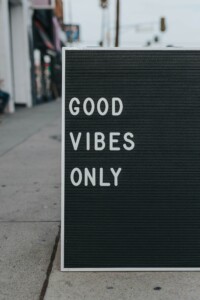
The Chinese have an all-encompassing word, “chi,” to describe energy. And that energy can move in unique ways, which would be referred to as “chi flow.” Sometimes like air, or an invisible liquid, chi flows and meanders through confined spaces (interiors) or outside areas, such as through wind and water courses. In fact, the words “Feng shui” translate as wind/water. To be more accurate, chi supplies a person, place or thing with energy.
One of the goals of Feng shui philosophy is to keep the chi positive and balanced. This can be accomplished in mostly ordinary and predictable ways. The following is a run down of the least you should know about chi.
- Sheng chi equals good energy and that can be evident in a space that is light, clean, pure, sacred, relaxing, or has features that contribute to or enhance a person’s health and well-being.
- Sha chi equals bad energy and that can be evident in spaces that are chronically dark, damp, dirty, congestive, unsafe or in any way undermining to a person’s health and well-being.
- Chi (as actual air currents) should flow smoothly and not too quickly or too slowly. Architectural features can conduct the chi flow in specific ways that are characterized as good or bad. For instance, uneven ceilings might look stimulating, but they boomerang the chi around a room and eventually cause restlessness or irritability to the people who have to function or sleep under those ceilings. A cramped, cluttered room will not allow the chi to flow enough, but an excessively long hallway might cause the chi to accelerate the longer it moves in a straight line, building momentum the longer the chi travels.
- Many types of chi imply movement, but there is another type of chi that is more or less stationary inside a building and confined to distinct directional areas. Imagine a house divided up into 8 pie-shaped sections like the space between the spokes in a wheel, all originating from the center. Eight of those directions can be relative to a real direction (North, South, East, West, Northwest, Southwest, Northeast, Southeast). There is unique chi in each of those directional sectors. Whatever is going on in the east sector of your house will not ever be in the west sector of your house, even if a strong gust of wind blew right through the house. This stationary chi is a type of magnetic field which was created and organized at the time the structure was built. This is the most amazingly specific type of chi. For example, a house that was built in 1950 and facing north has chi in the center which indicates the occupants could have eye or heart problems. These stationary energy patterns respond really well to natural elements such as water, wood, fire, earth, or metal right in the location that needs balancing.
- Chi can be described or categorized for practically anything, not just to define the effects of interior spaces or outside environments. All of your senses can be affected. Sounds can be pleasing and soothing (good chi) or brash and grating (bad chi.) What you see may be subjective or objective, but if it strikes you as offensive, that is sha chi. Something beautiful to you is sheng chi.
- The good news is that chi can often be enhanced with fairly little effort. As examples: if a room is cluttered and congestive, it can be cleaned, organized, and opened up. If something is broken, it can be fixed. If a room is vulnerable to obnoxious sounds from outside (like a freeway or airport), the room could be sound-proofed. The beauty of feng shui is that there are solutions, often inherently obvious in the problem. For the less obvious problems, it requires the analysis of an expert.
Author: Kartar Diamond
Company: Feng Shui Solutions ®
From the Feng Shui Theory Blog Series

